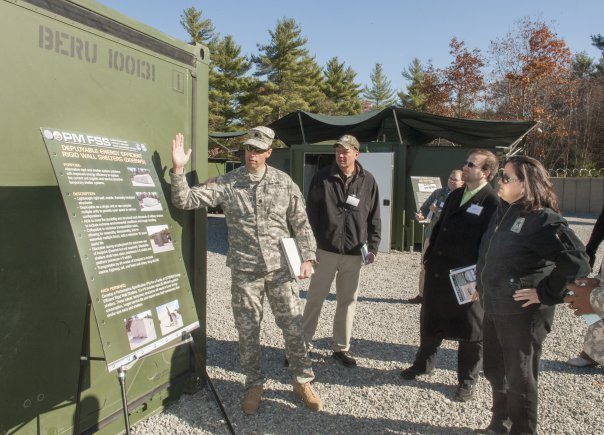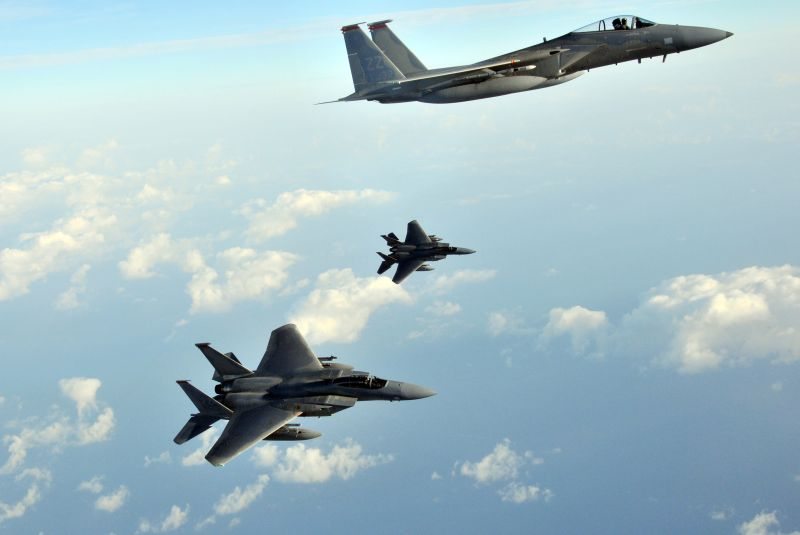Innovations meant to improve Soldiers’ quality of life during deployments — while saving lives, fuel, water and money — were on display here Nov. 5, at the Army Base Camp Integration Laboratory.
The Army Base Camp Integration Laboratory, or BCIL, hosted its second annual “Base Camp Resource and Energy Efficiency Day.” Situated on 10 acres at Fort Devens, the laboratory features two “Force Provider” 150-person base camps. One contains standard technologies; the other offers a glimpse into the Army’s energy future.
Katherine Hammack, assistant secretary of the Army for Installations, Energy and Environment, and Lt. Gen. Raymond V. Mason, Army deputy chief of staff, Logistics, were among those attending the event. They were briefed about shelters, power management, energy storage, waste disposal and waste-to-energy systems, alternative energy, micro-grids, energy-efficient structures, rigid-wall camps, and fuel-fired kitchens.
“It’s just great to see the strides that we’re making, the systems that we’re testing,” Hammack said. “The team here is doing a fantastic job finding new technologies, testing them, getting modifications made, and determining the resiliency of the systems prior to deploying them with our Soldiers.”
Mason said all the work toward resource and fuel efficiency was done to help Soldiers focus on their missions. He used the hypothetical example of a forward operating base in Afghanistan that has 20 fuel trucks pull up to its front gate.
“Soldiers are put at risk protecting that convoy,” Mason said. “Then you’ve got to get those 20 fuel trucks through your front gate. Every one of those trucks could be a potential bomb. Then you’ve got to store all that fuel somewhere on your forward operating base, which means you’ve got to build a bigger [FOB], and that fuel becomes a big target for either indirect or direct fire. Our purpose is to reduce down that risk by reducing down the amount of fuel that’s needed to conduct combat operations.”
And once it’s stored, much of it goes to something other than fueling vehicles or aircraft, Mason noted.
“Nearly 50 percent of the fuel that’s consumed in Afghanistan on Army operating bases is producing generator power,” Mason said.
Hammack pointed out that 70 to 80 percent of all ground convoys in Afghanistan, as measured by weight, consist of fuel and water deliveries.
“And so through better power management, flexible power sources, lightening the energy load on our Soldiers — all combined — we’re able to redirect our manpower and our equipment assets back to the mission,” said Hammack, “and that increases our agility and it increases our effectiveness overall.”
More than 12,000 service members training at Fort Devens rotate annually through the BCIL, providing invaluable user input about systems being developed here, with the ultimate goal of trimming fuel and water usage on base camps by 50 percent. Such innovations as micro-grids, solar shades, shelter liners and shower water reuse systems have already brought that goal closer to reality.
“When you look at the reductions to date, in a few years, it’s remarkable,” said Kevin Fahey, with Program Executive Officer, Combat Support & Combat Service Support. “And I think a lot of it is our ability to test things and get users on it and get feedback quickly, and then [be] able to prove that this is the thing we want put in the Soldiers’ and the Marines’ hands in the field.”
This progress has been made despite the budgetary headwinds faced by all Army programs.
“I think this BCIL will survive declining budgets because it’s proved the return on investment and the capabilities, and shortened the acquisition process,” said Hammack, “and all of those represent costs to the Army and costs to this nation.”
Mason said it’s critical to maintain funding for such programs as the BCIL.
“If we don’t spend appropriately in science and technology, research and development, we’re going to find ourselves on the battlefield in a situation where our enemies have a comparative advantage over us, as opposed to the other way around,” said Mason, “and our Soldiers are going to be put at more risk.”











